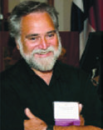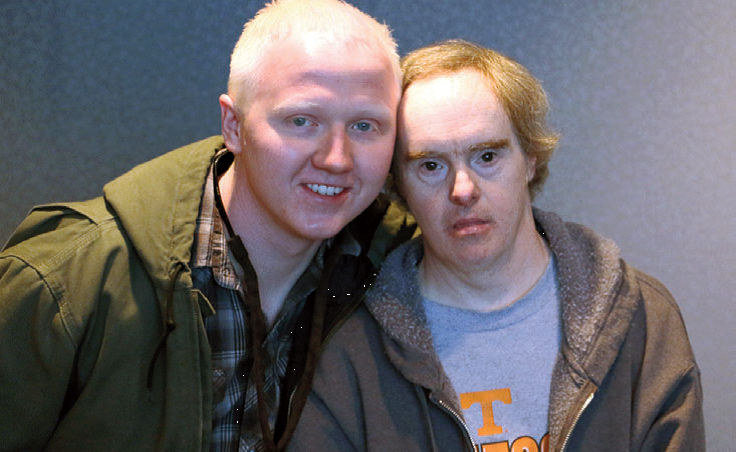ANCORA IMPARO – RICK RADER, MD ■ EDITOR-IN-CHIEF
The leading cause of Alzheimer’s disease and related dementias is aging. And that applies to all of us.
It had to happen. It’s been in the cards all along. We’re getting older. And it now applies to all of us.
The “all of us” applies to individuals with intellectual and developmental disabilities who had historically been relegated to shorter lifespans. And while that deserves the celebratory release of the white doves, there is another side to that achievement.
The leading cause of Alzheimer’s disease and related dementias is aging. And that applies to all of us.
For those of us working in the field of developmental disabilities (from front line direct care staff to neurologists) we see it every day. Our friends, our patients, the people we support, are experiencing the ravages of these degenerative diseases. There is an interesting aside to this phenomenon and that is how we “neuro-typicals” can relate, empathize and experience these changes in both those we support at work, and those we are growing to expect to support in our own families (and selves). It has become the singular level playing field.
It is best known for its “memory robbing” manifestations, although the disease has many other game- changing arrows in its quiver. Mark Twain’s genius provides us with this observation: “When I was younger, I could remember anything, whether it had happened or not; but my faculties are decaying now and soon I shall be so I cannot remember any but the things that never happened. It is sad to go to pieces like this but we all have to do it.”
The field has not stood idly by as sheer observers of the torment that dementia provides. There have been multiple positive and promising programs aimed at learning how to better support individuals with intellectual and developmental disabilities and dementia.
The National Task Group on Intellectual Disabilities and Dementia Practices, cofounded by Drs. Matthew P. Janicki and Seth Keller, have lead the way in creating a national movement dedicated to enlisting researchers, academics, clinicians, policy makers, families, payors—and most importantly, the “trench-based direct support professionals”— in creating, identifying, evaluating and promoting the best practices. The National Institutes of Health (NIH), in cooperation with the Administration for Community Living, creates and sponsors ongoing webinars addressing the key issues of ID and Dementia. The International Association for the Scientific Study of Intellectual and Developmental Disabilities is the global body that is promoting work in this area. Virtually every one of the Down syndrome associations has pulled out all the stops in working and contributing to this area as individuals with Down syndrome share an increased risk for developing Alzheimer’s disease. Even the Special Olympics (best known for their optics of dedicated athletes crossing the finish line with determined expressions) has begun to look at dementia as an influencer in the careers of their aging athletes.
With that as background for the ongoing efforts at identifying best practices, there is a “pearl” that is available for “prime time.”
Last year, the Special Hope Foundation (www.specialhope.org), a funder dedicated to supporting innovative healthcare projects for the ID/DD community awarded a grant for the purpose of ascertaining the efficacy of how “telemedicine” could assist community providers with expert distant consultation in supporting individuals with intellectual disabilities and dementia. While the program is still ongoing, one component of the project has already bore fruit.
The team (internally known as the Dementia DOGS; for Dementia Options, Guidance and Strategies) sent two of its members to the Orange Grove Center (where I have the pleasure of working) to form and cement a “face to face” working relationship (one of the “lessons learned” from the grant) with our dementia team. Dr. Lucy Esralew, a neuro-psychologist and Kathryn Pears, a noted trainer in dementia practices and protocols, came to Chattanooga to research the best methodologies for an effective “telemedicine” consult. Patti Wade, the Orange Grove point person for dementia care, suggested that Dr. Esralew should interview one of our direct support professionals (DSP) assigned to support an individual with a high suspicion of entering the early stages of dementia. The “pearl” was a result (“gift” would be a better word) of Lucy’s interview with the DSP.
James Massengale has been a direct support professional for five years. While working as a full time DSP, he has also attended college in his pursuit of earning a degree in education. James is one of those rare individuals who has a natural affinity in understanding the unspoken needs of people. This gift, coupled with the mentoring of Patti, has produced what I believe could be the poster boy for supporting individuals with dementia. His strengths have been in working with individuals with a dual diagnosis (intellectual disability and mental illness) and as a result he has been assigned to our most complex and challenging individuals. Currently he is supporting Kevin Gibson, an individual with Down syndrome and behavior that suggests early signs of Alzheimer’s disease.
Lucy sat down to speak to James in the pursuit of better understanding the informational, technical, emotional and behavioral needs of both the individual and the DSP. Lucy is that rare clinician that recognizes that the “dementia care equation” has multiple moving parts.
After a fruitful exchange of Lucy pursuing James’ ideology and vision of what constitutes collaborative and comprehensive dementia care (including resources, boundaries, decision making, autonomy, ongoing reality checks, benchmarks, environment, communicating with family, colleagues, and friends and the all-important issue of non-negotiables), Lucy took a sip of coffee and said to James, “If you could boil down the most effective ‘mind-set’ for successfully supporting an individual with dementia, what would that be?”
James thought for a moment and delivered what I consider to be one of the most significant insights relating to the art and science of dementia care.
“That’s simple, Dr. Esralew, I live in his world.”
“I live in his world,” is indeed the enchilada statement about supporting people with dementia.
Throw in all the phrases that relate to the words of a change agent, “aha moment,” “eureka,” “luminous,” “refulgent,” “lucent,” James’ words gave flight to all the “high fives” that caregivers provide for each other. Lucy had managed to extract from James a “living blueprint” for the successful support of individuals earmarked by dementia.
While the legions of professionals continue to explore best practices, we have been provided a cornerstone, a foundation, and a “north star” to build on.
And from what I learn from Charles, Patti, Lucy and Kathryn and their peers everywhere, every day, “living in his world” (for a period of time) can possibly be the most memorable place to learn to live better in our “own world.”
(With special thanks to The Dementia Dogs “TeleMentoring” Team: Dr. Seth Keller, Dr. Lucy Esralew, Kathy Service, Kathryn Pears, Dr. Phil McCallion, Shan Raju and Dr. Rick Rader; also Patti Wade, AmyJo Schamens, Melissa McNish, James Massenglae, Kevin Gibson, The Orange Grove Center and The Special Hope Foundation.) •
ANCORA IMPARO
In his 87th year, the artist Michelangelo (1475 -1564) is believed to have said “Ancora imparo” (I am still learning). Hence, the name for my monthly observations and comments.

— Rick Rader, MD, Editor-in-Chief, EP Magazine Director, Morton J. Kent Habilitation Center Orange Grove Center, Chattanooga, TN

